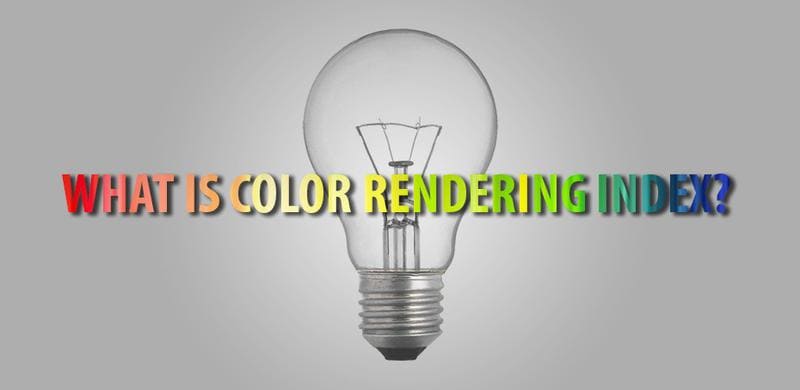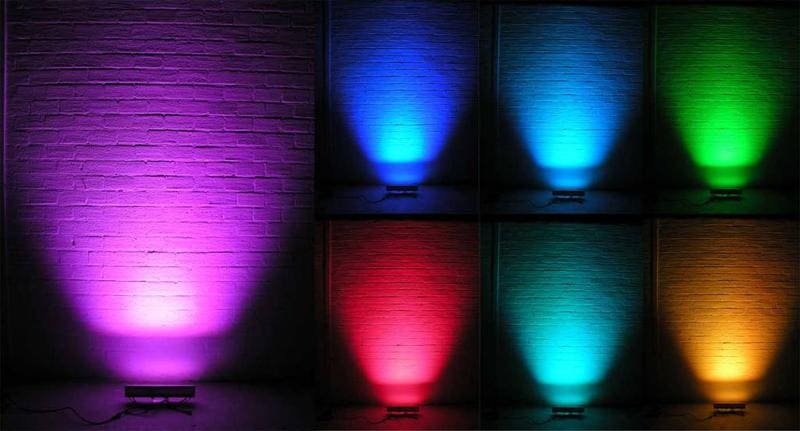تعد الإضاءة عنصرًا محوريًا في إنشاء بيئة تسوق فريدة تجذب العملاء ، وتجذبهم ، ويؤسس شخصية متميزة في المتجر مع عكس هوية العلامة التجارية. إضاءة البيع بالتجزئة الناجحة ليست حلًا يناسب الجميع ؛ يتطلب مزيجًا استراتيجيًا من الألوان والتباين والتحكم وكفاءة الطاقة. إلى جانب المعرفة والخبرة في التطبيق ، تتطلب تقنيات التنفيذ المناسبة وتقنيات الإضاءة المتقدمة باستخدام أحدث تقنية المصباح والتقنية. عندما يكون العملاء متحمسين لتجربة التسوق الخاصة بهم ، فإنهم يميلون إلى البقاء لفترة أطول ، ويقضون أكثر ، وأكثر عرضة للعودة والاستمتاع بالعودة.
LEDAPLUS مكرس لتوجيهك من خلال عملية إضاءة البيع بالتجزئة ، بمثابة مورد إضاءة شامل. نحن مؤهلون بشكل فريد لتلبية احتياجات إضاءة متاجر البيع بالتجزئة الخاصة بك ، ونقدم مجموعة متنوعة من أنظمة الإضاءة ، بما في ذلك الخيارات المسار والراحة والزخرفة ، للحفاظ على المتاجر جديدة ومحدثة. إن التأكد من أن استثمارك في الإضاءة يعطي عوائد إيجابية في خط القول الخاص بك يستغرق وقتًا وجهد ، و LEDAPLUS ملتزم بالشراكة معك في كل خطوة على الطريق.
أهداف تصميم إضاءة البيع بالتجزئة
ويتوقع تصميم إضاءة ناجح على كمية وجودة الإضاءة. يجب أن تؤثر على التصورات حول البضائع وتعزيز المظهر العام لمساحة البيع بالتجزئة. يجب على المصمم أن ينظر بحكمة في الخصائص الأساسية المختلفة عند تطوير استراتيجية الإضاءة الخاصة بهم ، بما في ذلك طول عمر المصباح ، وكفاءة النظام ، وصيانة التجويف ، وتقديم الألوان والمظهر ، وتكامل وضوء النهار ، وتوزيع الضوء ، ونقاط الاهتمام ، والتكلفة ، والتحكم في النظام ، والمرونة.
- جذب العملاء: اغسل المتسوقين في المتجر وتوجيههم عبر الفضاء بأمان وفعالية.
- تعزيز هوية العلامة التجارية: نقل صورة العلامة التجارية وإعطاء انطباعات حول صورة المتجر والنطاق السعري.
- خلق بيئة جمالية: توفير شعور بالراحة والرفاهية للعملاء ، وخلق جو تسوق جذاب.
- عرض البضائع: تسليط الضوء على الميزات والعروض ، وتعزيز الألوان والقوام والنماذج مع تقليل الوهج.
- تعزيز تقييم البضائع: تسهيل فحص المنتجات لتشجيع المشتريات.
- تمكين إكمال المبيعات: المساعدة في الانتهاء من المعاملات.
- تقليل تكاليف الطاقة: تنفيذ حلول الإضاءة الموفرة للطاقة لتقليل النفقات التشغيلية.
مع التطورات التكنولوجية مثل الهواتف الذكية والأجهزة اللوحية ، غالبًا ما تتجاوز رحلة العميل المتجر الفعلي. أصبحت صورة العلامة التجارية وتجربة التسوق الشاملة أكثر أهمية من أي وقت مضى. تلعب الإضاءة دورًا محوريًا في نقل رسالة تجزئة محددة ؛ إنه يضع توقعات العملاء فيما يتعلق بجودة البضائع ويؤثر على دوافعهم لإجراء عملية شراء. يعد اختيار الإضاءة المناسبة أمرًا ضروريًا لإسقاط صورة المتجر المطلوبة ، والتركيز على انتباه العملاء وجذبهم ، وتعزيز جاذبية البضائع ، مما يؤدي في النهاية إلى عمليات الشراء. يجب أن تكون حلول الإضاءة مصممة مع السوق المستهدفة ومفهوم المتجر وصورة العلامة التجارية ، حيث أن الإضاءة المثلى ستميز متجرك عن المنافسين.
يرتبط المتجر المصقول بشكل مباشر بزيادة الربحية. بدلاً من مجرد زيادة السطوع ، مما يؤدي إلى ارتفاع استهلاك الطاقة ، يجب استخدام الإضاءة عالية التباين. هذا النهج يجعل الإدراك أسهل ويزيد من مستويات الانتباه.
- الإضاءة العامة المنتشرة: يوفر شعورًا بالرفاهية ، مما يخلق جوًا ترحيبيًا.
- الإضاءة الرأسية: يسهل التوجيه داخل المساحة ، مما يساعد العملاء على التنقل في المتجر بشكل أكثر فعالية.
- إضاءة لهجة: يعزز تصور وجاذبية البضائع المعروضة من خلال تركيز الضوء على منتجات أو مناطق محددة ، وجذب الانتباه وجعل البضائع الرئيسية تبرز.
قاعة المبيعات هي المكان الذي تأتي فيه العلامة التجارية حقًا. لذلك ، يجب تقديم البضائع بشكل حقيقي قدر الإمكان. إن استخدام مصادر الضوء عالية CRI (مؤشر عرض الألوان) ومزيج متوازن من الإضاءة يحقق ذلك ، مما يضمن أن الألوان تبدو نابضة بالحياة ودقيقة.
بالنظر إلى أن المنتجات والعروض والعروض التي يتم تغييرها بشكل متكرر في بيئة البيع بالتجزئة ، يجب أن تكون أنظمة الإضاءة مرنة للغاية. تتيح هذه المرونة إجراء تعديلات سهلة ، مما يضمن الحفاظ دائمًا على المظهر الجديد والمعاصر. يساعد تكييف الإضاءة على عروض جديدة أو مجالات ترويجية في الحفاظ على اهتمام العملاء والمشاركة.
في الختام ، يعد الاستخدام المدروس والاستراتيجي للإضاءة في بيئات البيع بالتجزئة أمرًا ضروريًا لإنشاء تجربة تسوق جذابة ، وتعزيز صورة العلامة التجارية ، وقيادة المبيعات في النهاية. من خلال النظر في أنواع الإضاءة المختلفة وفوائدها المحددة ، يمكن لتجار التجزئة تعزيز الأجواء الإجمالية لمحلاتهم ، مما يجعلها أكثر جاذبية وترحيبًا بالعملاء.

اللون ، الانعكاس ، & التباين في إضاءة البيع بالتجزئة
إضاءة البيع بالتجزئة الفعالة هي توازن متطور للعناصر العديدة. البضائع المعروضة ، والأبعاد وتكوين المساحة ، والمواد الديموغرافية المستهدفة ، والرسالة المقصودة للعلامة التجارية جميعها تلعب الأدوار المحورية. يعد التفاعل بين اللون والانعكاس والتباين وكفاءة الطاقة أمرًا أساسيًا لتصميم إضاءة التجزئة الناجح.
يتم تعريف خصائص الألوان لمصادر الضوء بواسطة قياسين رئيسيين: درجة حرارة اللون المرتبطة (CCT) ومؤشر عرض الألوان (CRI).
من الضروري اختيار الإضاءة مع خصائص اللون الأمثل. تعتبر درجة حرارة اللون المناسبة و CRI ضرورية في تعزيز ظهور البضائع والتأثير على الجو العام لمساحة البيع بالتجزئة. هذه المحاذاة محورية في تعزيز صورة المتجر وخلق بيئة جذابة.
لا يتم إنشاء جميع مصادر الضوء على قدم المساواة. قد تظهر مصباحان أبيضان متشابهان ، لكنهما يمكن أن يجعلوا الألوان بشكل مختلف أو يثير تصورات مكانية مميزة. إن توظيف مصابيح مع نفس CCT و CRI مماثلة يضمن إضاءة متسقة وموحدة في جميع أنحاء الفضاء.
الانعكاس والوهج ، على الرغم من أنه من المحتمل أن يكون مفيدًا ، يمكن أن يكون ضارًا إذا سوء الإدارة. يستخدم بشكل صحيح ، يمكنهم لفت الانتباه إلى البضائع. سوء تأليف ، يمكن أن يسبب تهيج وعدم الراحة.
تعد المصابيح ذات القيم العالية لخفض الوهج ضرورية لتجنب الوهج المباشر والانعكاسات غير المرغوب فيها على الأسطح اللامعة ، مثل التركيبات اللامعة والسجلات النقدية ومنصات الدبوس.
متجر مشرق للغاية ليس بالضرورة حل الإضاءة الأكثر فعالية. الاستفادة من التباين لتسليط الضوء على البضائع وتحديد مناطق مختلفة داخل المساحة يجعل العملاء يشعرون بالراحة ويوجه انتباههم إلى المنتجات المميزة.
درجة حرارة اللون المرتبطة
تحدد درجة حرارة اللون المرتبطة (CCT) بنية مصباح المصباح المنبعث. يتم تعيين كل مصباح درجة حرارة لون تعكس اللون الذي يشعه. يتم تصنيف الضوء الأبيض بشكل عام إلى ثلاثة قطاعات: دافئة ، محايدة ، وباردة ، جميعها تقاس في كلفن (ك).
- أبيض دافئ (أقل من 3000 كيلو): هذه الفئة من الضوء ، التي تذكرنا على ضوء الشموع مع لون مصفر ، تثرى الحمراء والبرتقال ، والبلوز الخوفي ، وتضفي صبغة أصفر إلى البيض والخضر. يخلق أجواء دافئة وحميمة.
- أبيض محايد (3000K - 3500K): يعزز الضوء الأبيض المحايد الألوان بالتساوي دون التأكيد على الأصفر أو الأزرق. هذا الإضاءة المتوازنة يفضي إلى بيئة الرفاه العام.
- أبيض بارد (فوق 3500 كيلو): على غرار ضوء القمر على الثلج مع صبغة مزرقة ، يعزز الضوء الأبيض البارد البلوز ، والأحمر الكبهي ، ويمنح البيض والخضر يلقيون مزرقًا. إنه يضفي شعوراً بالرحابة على المنطقة.
تميل الإضاءة الدافئة إلى جعل المساحات أكثر حميمية وراحة ومألوفة ، مما يعزز جوًا ترحيبيًا. في المقابل ، يمكن للإضاءة الباردة أن تجعل المناطق تبدو أكبر وأكثر توسعية. قد تشجع الإضاءة المحايدة ، من خلال تعزيز الشعور بالرفاهية ، العملاء على الاستمرار لفترة أطول في المتجر ، مما قد يزيد من احتمال الشراء.
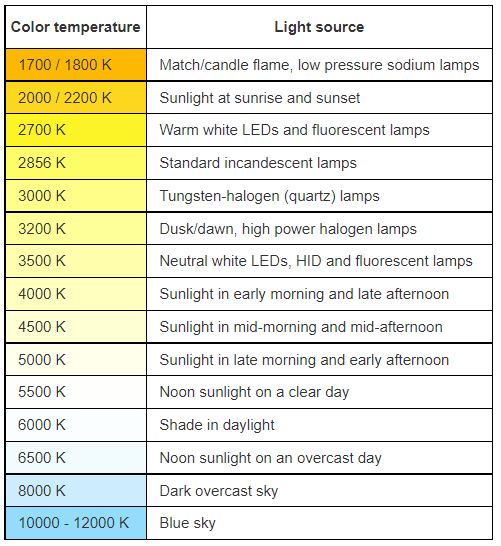
مؤشر عرض الألوان
مؤشر عرض الألوان (CRI) هو مقياس تقييم يقيس كيف يقوم مصدر الضوء بدقة بإعادة إنتاج ألوان الكائنات بالمقارنة مع مصدر الضوء المرجعي. هذا الفهرس مفيد بشكل خاص لمقارنة مصادر الضوء من نفس النوع ودرجة حرارة اللون المرتبطة (CCT).
لتحديد CRI ، يتم استخدام لوحة قياسية من الألوان المحددة. يتضمن الحساب قياس الفرق بين كل عينة لون عند إضاءة مصدر ضوء الاختبار ومصدر المرجع. يتم حساب متوسط هذه الاختلافات لتحقيق درجة تتراوح من 0 إلى 100 ، مع 100 تمثل أقرب تطابق بين مصادر الاختبار ومصادر الإضاءة المرجعية.
يشير CRI الأعلى إلى إمكانات عرض ألوان متفوقة ، مما يجعل الألوان تبدو أكثر حيوية وطبيعية. بالنسبة لبيئات البيع بالتجزئة ، حيث يجب عرض المنتجات بطريقة حقيقية قدر الإمكان ، يوصى بقيمة CRI بين 80 و 100. لا يعزز هذا المستوى من الدقة النداء الجمالي للبضائع فحسب ، بل يعزز أيضًا مصداقية المتجر.
انعكاس
في تصميم الإضاءة ، يجب النظر في انعكاس الضوء على الأسطح المختلفة داخل الفضاء بدقة. ترتد الأسطح ذات مستويات الانعكاس الأعلى للضوء مرة أخرى إلى المنطقة ، وبالتالي زيادة الإضاءة الإجمالية. يتم قياس انعكاس الضوء على مقياس من 0 ، مما يشير إلى امتصاص الضوء الكلي ، إلى 100 ، مما يشير إلى انعكاس الضوء الكلي.
المواد التي توفر انعكاسًا للانتشار ، مثل الألمنيوم المصقول ، تظهر انعكاسًا مرتفعًا ولكنه منتشر ، مما يعكس ما يقرب من 5-10 ٪ من الضوء. توفر مواد الانعكاس المنتشرة ، مثل جدار بسيط مرسوم بالأبيض ، سطوعًا موحدًا وتكون بمثابة خلفيات عاكسة ممتازة للأشكال والمساحات الأصغر. لا يؤدي استخدام الأسطح البيضاء والمعاكسة للضوء إلى تقليل تكاليف الطاقة فحسب ، بل يقلل أيضًا من الظلال الناجمة عن الرفوف والسلع المكدسة ، وبالتالي تعزيز النداء البصري ووظائف بيئة البيع بالتجزئة.
| مادة | الانعكاس في المئة |
|---|---|
| انتشار: سطوع السطح الموحد | |
| الحجر الجيري | 35-60 |
| الطلاء الأبيض | 75-90 |
| الزجاج الهيكلي الأبيض | 70-80 |
| الانتشار: انعكاس منتشر عام | |
| المصنوع من الألومنيوم | 55-60 |
| الألومنيوم المحفور | 70-82 |
| المصنعة الألومنيوم (منتشرة) | 70-80 |
| الساتان كروم | 50-55 |
| Specular: التحكم الاتجاهي في السطوع في زوايا محددة | |
| الكروم | 60-65 |
| البلاستيك المغلفة المعادن | 75-95 |
| الزجاج المغطى بالمرايا والبصرية | 80-95 |
| الألومنيوم المصقول | 69-70 |
| الفولاذ المقاوم للصدأ | 55-65 |
نسب التباين
في بيئات البيع بالتجزئة ، يعد إنشاء أجواء مريحة للرعاة مع تسليط الضوء على البضائع الرئيسية والمتاجر أمرًا بالغ الأهمية. مجرد زيادة السطوع ليس فقط غير فعال من حيث استهلاك الطاقة ولكن أيضًا غير فعال في تحقيق الأجواء المطلوبة. يمكن أن تجعل المتاجر المشرقة المفرطة ذات الوهج المفرط العملاء غير مريحين ، مما يقلل من احتمال زيارات العودة. يكمن الحل في طبقة الضوء ويستخدم التباين في جميع أنحاء الفضاء.
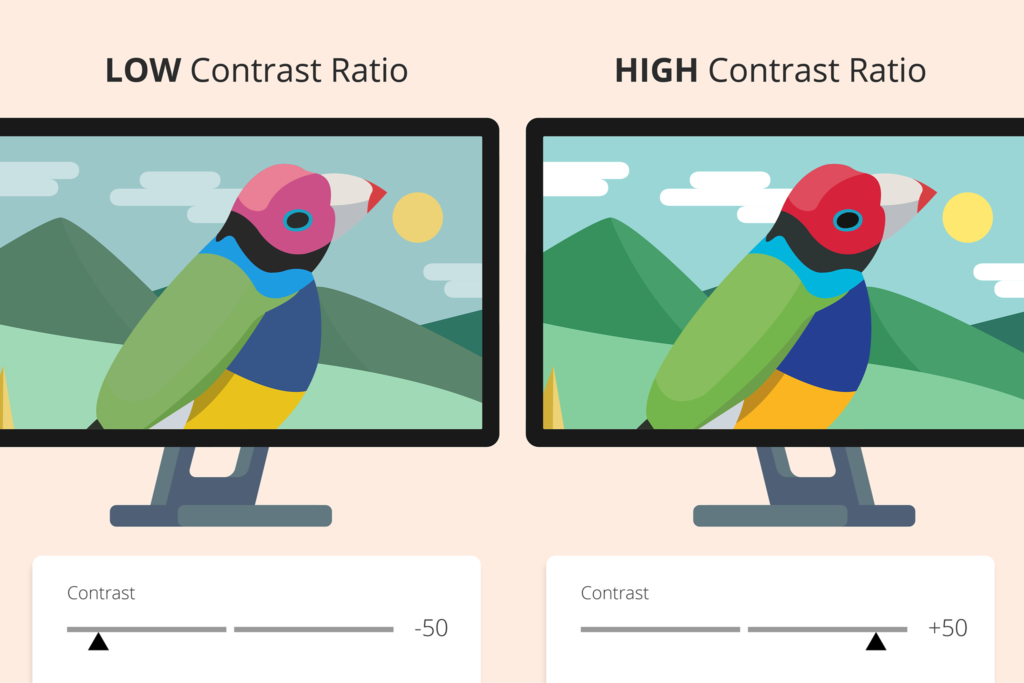
نسب التباين
هناك أربع طبقات أساسية من إضاءة البيع بالتجزئة: الإضاءة العامة (أو المحيطة) ، وإضاءة لهجة ، وإضاءة المهام ، والإضاءة الزخرفية. يتم قياس هذه الطبقات في Footcandles ، مع الجمعية الهندسية المضيئة في أمريكا الشمالية (IESNA) توفر توصيات مستوى الإضاءة بناءً على نوع الإضاءة ، وطبيعة المساحة ، وملف تعريف العميل ، والاستخدام المقصود للإضاءة. عن طريق وضع هذه الأنواع المختلفة من الإضاءة ، يتم إدخال العمق والبعد في الفضاء.
يتم تحقيق التباين من خلال تغيير مستويات الإضاءة بين الأنواع المختلفة من الإضاءة ، وخاصة الإضاءة المهمة واللكنة ، للتأكيد على البضائع المميزة مقابل مستويات الإضاءة العامة. يمكن أن يخلق التباين التسلسلات الهرمية البصرية داخل بيئة البيع بالتجزئة ، وتوجيه وتركيز الانتباه على البضائع المحددة بناءً على نسبة التباين. على سبيل المثال ، فإن نسبة التباين 2: 1 ، حيث تكون إضاءة لهجة مشرقة مثل الإضاءة العامة ، تخلق تمايزًا دقيقًا. على العكس ، تنتج نسبة التباين 30: 1 تأثيرًا محوريًا واضحًا على العناصر المميزة.
يوفر كل نوع من الإضاءة العديد من الخيارات ، ومن خلال دمج مستويات الإضاءة الموصى بها ونسب التباين ، تتميز المساحة الناتجة باهتمام بصري وعمق وبعد.
يوضح الجدول التالي درجات حرارة الألوان الموصى بها و CRI الموصى بها لأنواع مختلفة من المتاجر.
| نوع المتجر | مؤشر عرض الألوان (CRI) | درجة حرارة اللون المرتبطة (ك) |
| متجر الجزار | >80 | 2500 - 3000 أو مصابيح LED مع طيف لإضاءة اللحوم |
| سمكة | >80 | الفضة ، الأسماك الأزرق >5000 ، مع والأسماك الذهبية 4000 ، الأسماك الحمراء <4000K |
| مخبز | >80 | 2500k - 3000k |
| Greengrocer | >80 | الفواكه (التفاح. البرتقال ، إلخ): 2700K -3000K الخضار الخضراء: 4000κ |
| ملابس / متجر أزياء | >90 | 3500 - 4000 |
| المعدات الرياضية | >80 | 4000 |
| أحذية / جلد | >80 | 3000 - 4000 |
| المجوهرات ، الساعات ، البصريات | >80 | 2700 - 4000 |
| العطور ، الصيدليات | >80 | 4000 |
| مصففي الشعر | >90 | 4000 |
| الأثاث ، السجاد | >80 | 2700 - 4000 |
| الأواني الزجاجية / متاجر الهدايا / الأدوات المنزلية | >80 | 2700 - 4000 |
| الإلكترونيات | >80 | 2700 - 4000 |
| المكتبات | >80 | 3500 - 4000 |
طبقات من إضاءة البيع بالتجزئة
في تصميم إضاءة البيع بالتجزئة ، عادة ما يتم استخدام أربع طبقات مميزة من الضوء: الإضاءة العامة (أو المحيطة) ، وإضاءة المهام ، وإضاءة لهجة ، والإضاءة الزخرفية. إن المزيج الاستراتيجي والتوازن لأنواع الإضاءة هذه تعاني من الفضاء باهتمام بصري ، مما يخلق بيئة ليست فقط أكثر جاذبية ولكنها مثيرة وجذابة للعملاء.
الإضاءة العامة
تعمل الإضاءة العامة كمصدر رئيسي للإضاءة داخل الفضاء ، مما يضع مستوى موحدًا وتأسيسيًا للضوء. غالبًا ما تكون هذه الطبقة محورًا لجهود الحد من الطاقة ، خاصة مع اعتماد مصادر LED ، مما يسمح بتعديل مستويات الضوء من التركيبات الأخرى.
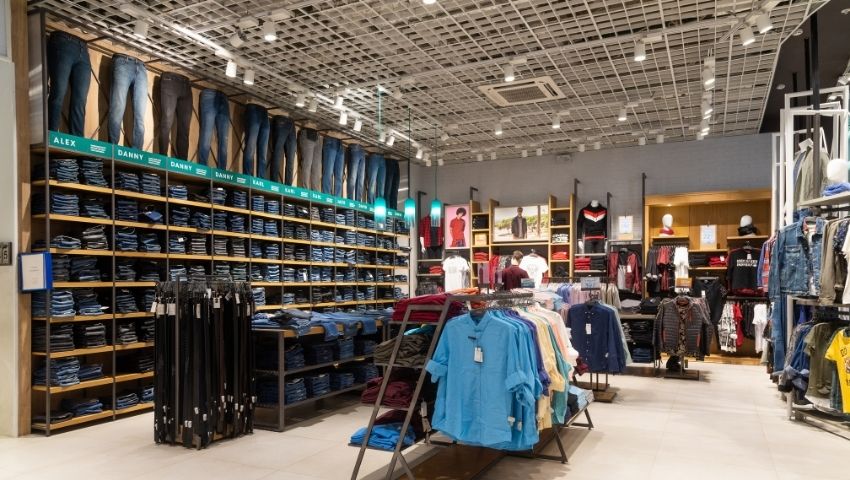
الإضاءة العامة لنساء التجزئة
- مستويات الضوء الموصى بها: للإضاءة العامة ، يقترح مجموعة من 30 إلى 50 قدم. هذا المستوى من الإضاءة يكفي لإضاءة البضائع الحد الأدنى مع تمكين الموظفين من أداء المهام بكفاءة مثل التنظيف وإعادة التخزين وإدارة تداول العملاء في جميع أنحاء المتجر. إن الإضاءة العامة المنتشرة تعزز الشعور بالرفاهية ، وتعزيز راحة العملاء وتشجيعهم على البقاء لفترة أطول. تتمثل إحدى الطرق الفعالة لتحقيق ذلك في وضع تركيبات استراتيجية مع العاكسات ، والحياكة ، والقطاعات العددية في أنماط متداخلة.
- إضاءة محيط: تعد الإضاءة المحيطية ، أو غسل الجدار ، مفيدة في تحديد مساحات الترويج وتوفير الإضاءة الرأسية ، والتي يمكن أن تجعل منطقة البيع بالتجزئة تبدو أكثر توسعية. باستخدام الشمعدان أو غسالات الجدران ، يخلق الإضاءة العمودية أجواء ترحيبية وتعزز رؤية وتأثير الجدار البصري. تعتبر الأسطح الرأسية المضيئة أمرًا بالغ الأهمية للراحة البصرية والإدراك المكاني ، ومساعدة اتجاه العملاء والمساهمة في انطباع بالانفتاح والضيافة. لا يؤثر هذا السطوع الرأسي على الجمالية الشاملة فحسب ، بل يعمل أيضًا بمثابة إشارة اتجاهية ، وتوجيه العملاء عبر المتجر وجعل المساحة تبدو أكبر وأكثر دعوة.
إضاءة المهام
يتم استخدام إضاءة المهام لإلقاء الضوء على مجالات محددة لمهام معينة ، مما يوفر مستويات مركزة ومترجمة ومتزايدة من الإضاءة. إنه أمر حيوي لوظائف المساحة ، واستخدام مصادر موفرة للطاقة أمر بالغ الأهمية لتقليل تكاليف التشغيل.
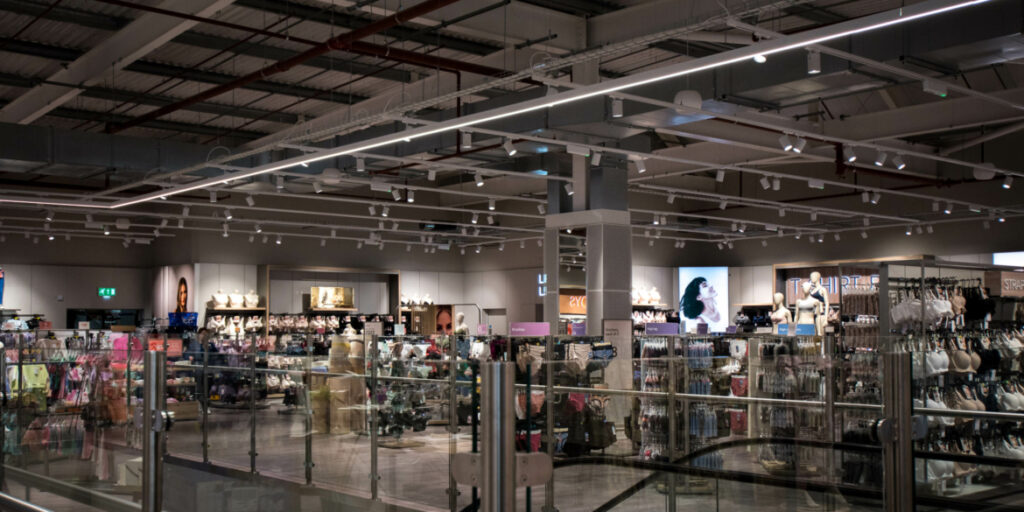
إضاءة المهام
- التطبيق والفعالية: تكون إضاءة المهام أكثر فاعلية عندما تكسب الإضاءة العامة في مساحات العمل ، ومجالات المؤتمرات ، وأسطح كونترتوب. يجب أن تزيل إضاءة المهام الفعالة الظلال على المنطقة المحددة مع منع الوهج من المصباح أو الأسطح العاكسة.
- نقطة البيع: يعد إكمال البيع مهمة التجزئة الأكثر أهمية ، مما يمثل التفاعل النهائي بين العميل والموظفين. تعتبر Luminaires القلادة في نقطة البيع طريقة ممتازة لتوفير إضاءة المهام ، وتمكين الموظفين من التفاف الحزم بكفاءة ودقة ، وعملية تسجيل المبيعات ، والتعامل مع معاملات بطاقات الائتمان ، وبالتالي تقليل الأخطاء والعوائد. تتراوح مستويات الإضاءة الموصى بها لمجالات المهام من 50 إلى 200 قدم. عند إلقاء الضوء على منطقة المهمة ، فكر في فرق السطوع ، أو التباين ، بين منطقة المهمة والمساحة المحيطة. توفر نسبة 3: 1 من إضاءة المهام إلى الإضاءة العامة تباينًا مثاليًا لتقييم البضائع ، وعلامات القراءة ، أو الملصقات ، أو التعبئة ، وتحديد أقسام المتاجر.
- المرونة والقدرة على التكيف: عادة ما تكون كمية الضوء المطلوبة للمهام ، أو النصوع ، هي المتغير الأكثر قابلية للتعديل في إضاءة المهام ويمكن زيادته للتعويض عن مستويات التباين المنخفضة. تضمن هذه المرونة أن تكون مجالات المهام مضاءة بشكل كاف لمختلف الأنشطة ، وتعزيز الوظائف الكلية والكفاءة.
إضاءة اللكنة
إضاءة لهجة تخلق تركيزًا كبيرًا على البضائع من خلال مصادر الضوء المركزة أو النقطة. تضيف هذه التقنية العمق ، والتباين ، وتؤسس نقطة محورية للعناصر المعروضة ، وتسليط الضوء على شكلها ، وملمسها ، والتشطيب ، واللون ، وبالتالي لفت انتباه العملاء. ومع ذلك ، إذا تم توجيه الضوء بشكل غير دقيق ، فقد يؤدي ذلك إلى ظلال غير مرغوب فيها تعرقل تفاصيل البضائع وتنتج وهجًا مشتتًا.
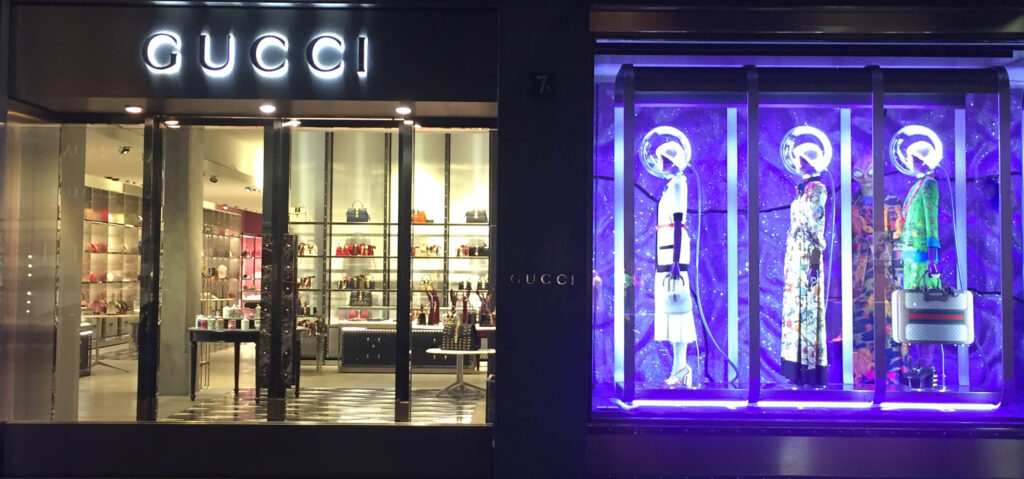
إضاءة لهجة في متاجر البيع بالتجزئة
- الدقة والشدة: مفتاح إضاءة اللكنة الفعالة هو ضمان أنها أكثر دقة وأعلى كثافة من الإضاءة المحيطة المحيطة. يوفر تركيبات المسار ، والمباني المريحة ذات الحواف القابلة للتعديل ، والإضاءة القابلة للتعديل المخفية مع مصابيح مصدر النقطة التحكم في الاتجاه ، مما يجعلها فعالة بشكل خاص لإضاءة اللكنة. يمكن أن تهدف هذه الخيارات بدقة إلى تسليط الضوء على أفضل سمات المنتجات ، مما يؤثر بشكل كبير على انطباعات العملاء. من الأهمية بمكان تجنب الإفراط في الإضاءة ، والتي يمكن أن تنفي التأثير المقصود.
- النسب المثلى: توصي الجمعية الهندسية المضيئة في أمريكا الشمالية (IESNA) بنسبة 5: 1 من إضاءة اللكنة إلى الضوء المحيط لضمان تبرز البضائع وتخلق تأثيرًا بصريًا كبيرًا. قد تتطلب البضائع الداكنة نسبة أعلى لإخراج التفاصيل. تتراوح مستويات الإضاءة الموصى بها لإضاءة اللكنة من 150 إلى 500 قدم. بالنسبة لشاشات العرض ، خاصة في عرض عناصر مثل المجوهرات أو الكريستال ، يتم استخدام نسب أعلى من 15: 1 أو حتى 30: 1 لإنشاء بريق جذاب.
- التنفيذ والتأثير: لا يسلط إضاءة Accent Explied التي تم تنفيذها بشكل صحيح فقط الضوء على البضائع الرئيسية فحسب ، بل تعزز أيضًا النداء الجمالي العام لمساحة البيع بالتجزئة. من خلال توجيه الضوء المدروس ، يمكن لتجار التجزئة توجيه تركيز العملاء ، وتعزيز التجربة المرئية ، وقيادة المبيعات في النهاية.
الإضاءة الزخرفية
إن الإضاءة الزخرفية تؤدي دورًا مزدوجًا: فهي تعزز النداء الجمالي لمساحة البيع بالتجزئة مع المساهمة في استراتيجية الإضاءة الشاملة. تشمل هذه الفئة المعلقات والشمعدانات والثريات ومصابيح الطاولة والأرضية والأسطوانات. تنفيذها بشكل صحيح ، تكمل الإضاءة الزخرفية التصميم الداخلي ، مما يضيف الاهتمام البصري وتعزيز صورة العلامة التجارية للمتجر.
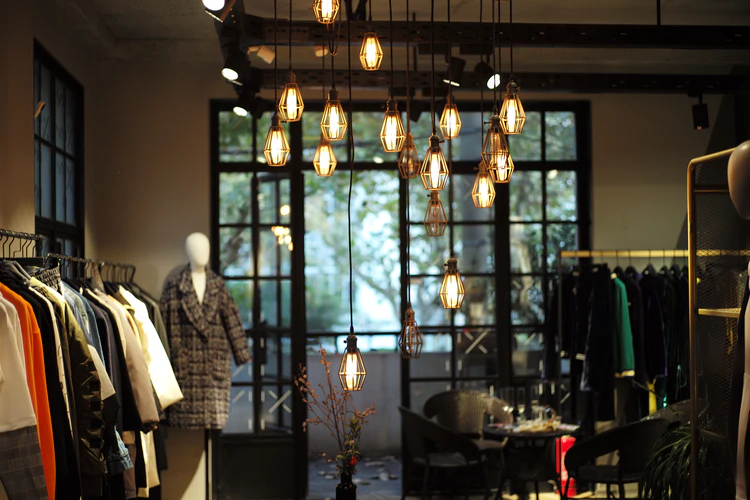
إضاءة زخرفية لمتجر البيع بالتجزئة
- المعلقات والتنسيب: يجب تركيب المعلقات على 8 إلى 12 قدمًا فوق الطابق النهائي (A.F.F.) للبقاء في العرض دون عرقلة تجربة التسوق. عند وضعها على العدادات ، يجب عليهم تعليق 36 إلى 48 بوصة فوق الطائرة الأفقية ، مما يسمح للعملاء برؤية شاشات زجاجية دون عائق.
- شمعدانات الجدار والأسطوانات: يجب تثبيت شمعدانات الجدران والأسطوانات المثبتة على الحائط على بعد حوالي 5.5 قدم. يساعد هذا الارتفاع على خلق شعور بالحجم البشري ، وخاصة في بيئات البيع بالتجزئة الواسعة.
- تأثير الجمالية والعلامة التجارية: تعد الإضاءة الزخرفية عنصرًا رئيسيًا في عكس صورة العلامة التجارية للمتجر ، وتعزيز موضوع وأسلوب المساحة. يضيف طبقة من الديكور والجمال والأناقة التي تساهم في جو الترحيب. من خلال جعل بيئة البيع بالتجزئة تشعر بالضيافة والراحة ، تشجع الإضاءة الزخرفية زيارات عملاء أطول ، مما يحتمل أن تزيد من المبيعات.
- الجمع بين طبقات الإضاءة: يؤدي دمج الإضاءة الزخرفية مع طبقات الإضاءة العامة والمهمة واللكنة إلى بيئة متجر أكثر جاذبية وإثارة وجذابة. يضمن هذا النهج الشامل لتصميم الإضاءة أن مساحة البيع بالتجزئة ليست مضاءة بشكل جيد فحسب ، بل تتوافق بشكل بصري وتتوافق مع جمالية المتجر بشكل عام.
حلول التطبيق
يتضمن تحقيق تصميم إضاءة للتجزئة استثنائي العديد من العوامل ، وكلها تهدف إلى هدف واحد نهائي: زيادة المبيعات. تعزز الإضاءة الذكية رؤية البضائع وتخلق جوًا من الرفاه ، مما يعزز احتمال المشتريات. في LeDaplus ، نسعى جاهدين لتحقيق التوازن بين فعالية الإضاءة ، وكفاءة التكلفة ، والمرونة. تم تصميم مجموعة واسعة من المباريات الخاصة بنا لتحسين عرض البضائع مع تقليل النفقات التشغيلية المستمرة.
إضاءة واجه المتجر
في عالم التجزئة التنافسي ، يكون جذب انتباه العميل أمرًا بالغ الأهمية. تعمل نافذة البيع بالتجزئة بمثابة جاذبية محورية ، حيث سد الفجوة بين المارة والبضائع داخل المتجر. لتأسر العملاء ، غرس الدراما في شاشاتك. الاستفادة من الضوء الأبيض المكثف مع إضاءة موحدة مشبعة. يجب أن تسليط الضوء على إضاءة اللكنة المباشرة وتحديد البضائع ، مما يخلق مغناطيسًا بصريًا يجذب المستهلكين إلى الداخل ويشركهم في تجربة المبيعات.
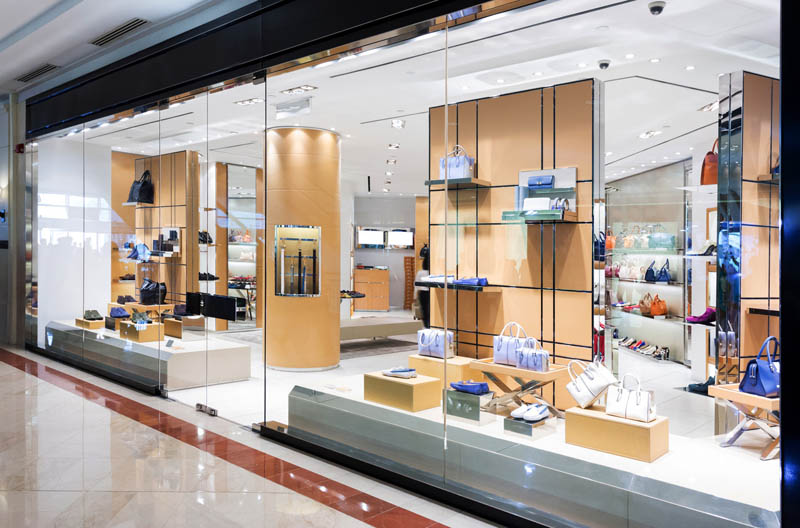
إضاءة نافذة
يمكن أن يضيف ضوء النهار ، وهو حل إضاءة يتم تجاهله غالبًا ولكنه موفرة للطاقة ، بعدًا مقنعًا إلى مساحات البيع بالتجزئة. إن فهم كيفية تفاعل الضوء الطبيعي مع الداخلية للمتجر يمكن أن يعزز النداء البصري للبضائع. يجب أن تتكيف إضاءة النوافذ مع الوقت من اليوم. خلال ساعات النهار ، فإن إضاءة لهجة قوية تركز على البضائع سوف تجذب المزيد من الاهتمام. في الليل ، يمكن أن يجمع بين الإضاءة المحيطة المنخفضة وأضواء لهجة قوية اهتمام المشاهدين.
يجب أن يكون مدخل المتجر مضاءًا بشكل مشرق لتبرز ضد الضوء المحيط ، وخاصة تحت إضاءة المظلة ، مما يتطلب حماية إضافية. يجب أن يكون هذا المستوى العالي من السطوع واضحًا من مسافة بعيدة ، مما يضمن وجود انطباع أول مقنع. تعد جودة إضاءة المدخل أمرًا بالغ الأهمية ، مما يؤثر على ما إذا كان العملاء المحتملين يقررون الدخول إلى المتجر.
الرف ، قضية & مضادة الإضاءة
تتطلب الأرفف والحالات والعدادات الإضاءة دقة لتعزيز جاذبية المنتج وجذب انتباه العملاء. تتضمن الطريقة السائدة استخدام مصادر مضغوطة مثل مصابيح شريط LED موضوعة بالقرب من عناصر العرض ولكنها مخفية من العرض المباشر. من الأهمية بمكان إلقاء الضوء على هذه المساحات بشكل خلاق لرفع مستوى استصواب المنتج. يجب أن تتجاوز مستويات الإضاءة الإضاءة المحيطة بمقدار 3-5 مرات ، مما يضمن تسليط الضوء على البضائع بشكل بارز لسهولة التقييم من قبل العملاء.
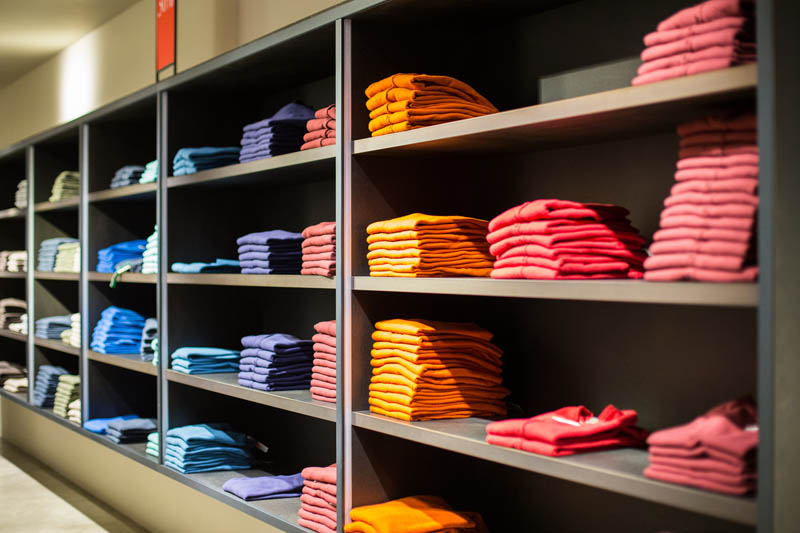
الرف ، قضية & مضادة الإضاءة
يعد اختيار مؤشر درجة حرارة اللون المناسبة ومؤشر عرض الألوان (CRI) لمصدر الضوء أمرًا ضروريًا لتجنب تشويه أو إتلاف ظهور البضائع المعروضة. يلعب اتجاه الضوء على الرفوف دورًا محوريًا ؛ يمكن أن يخلق الإضاءة الخلفية تأثيرًا جذابًا بصريًا مقارنةً باستخدام إضاءة لهجة فقط. غالبًا ما تمر الرفوف السفلية دون أن يلاحظها أحد. ومع ذلك ، من خلال وضع الإضاءة لللكنة أو الإضاءة الخلفية على الثلث السفلي من الرفوف ، يتم تشجيع العملاء على الاستمرار ، وبالتالي زيادة احتمالية المشتريات.
إضاءة الرف
يخدم الإضاءة الرف غرضًا مزدوجًا: إنه يأسر العملاء ويسهل تقييم البضائع دون عناء. يجب أن يحقق نظام الإضاءة هذا هدفين أساسيين: الإضاءة الشاملة للبضائع والتمثيل الدقيق للألوان والملمس. بالنظر إلى الطبيعة المتطورة باستمرار لمتطلبات العرض ، فإن الحفاظ على المرونة داخل هذا النظام أمر بالغ الأهمية. تعد أنظمة إضاءة Track LeDaplus مثالية ، حيث تسمح بإضافة أو إزالة أو إعادة وضع المباريات دون ضرورة إلغاء تنشيط القوة إلى المسار. يجب الحفاظ على الإضاءة على البضائع على الأقل من ثلاثة إلى خمسة أضعاف مستويات الإضاءة المحيطة.
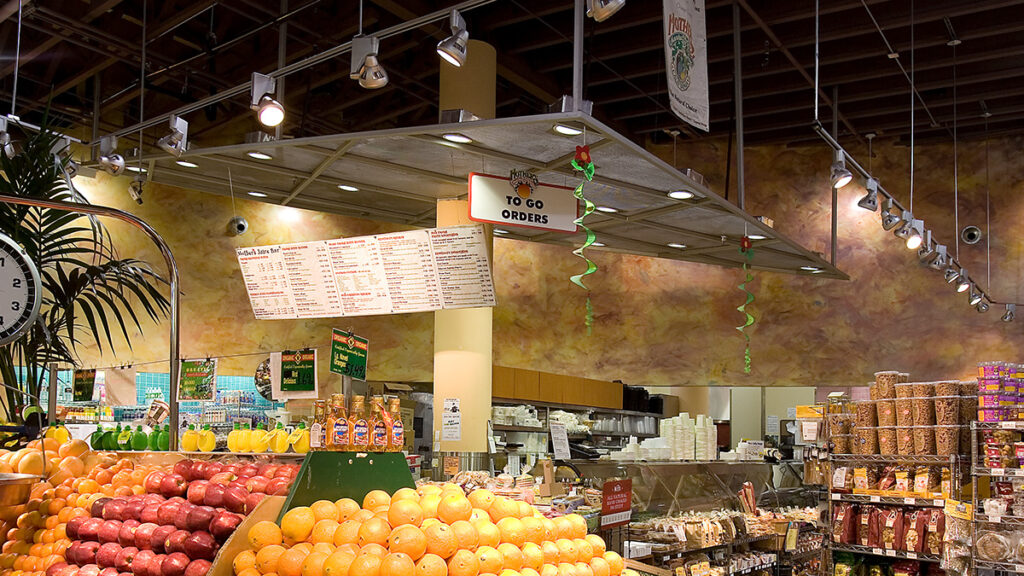
إضاءة رف لمتجر البيع بالتجزئة
إضاءة غرفة ملائمة
إضاءة غرفة الملابس المثلى أمر بالغ الأهمية ، لأنه يؤثر بشكل كبير على قرارات الشراء. يعد استخدام إضاءة عالية الجودة مع مؤشر عرض ألوان مرتفع أمرًا ضروريًا لتسليط الضوء على شكل وملمس البضائع ، مما يضمن أن تظهر الألوان أصيلة وحيوية. يجب أن يعكس تصور لون البضائع في غرفة التركيب ذلك في قاعة المبيعات. الاستفادة من مصادر المصباح مع Cris Cris و CCTS يضمن الاتساق البصري بين هذه المناطق.
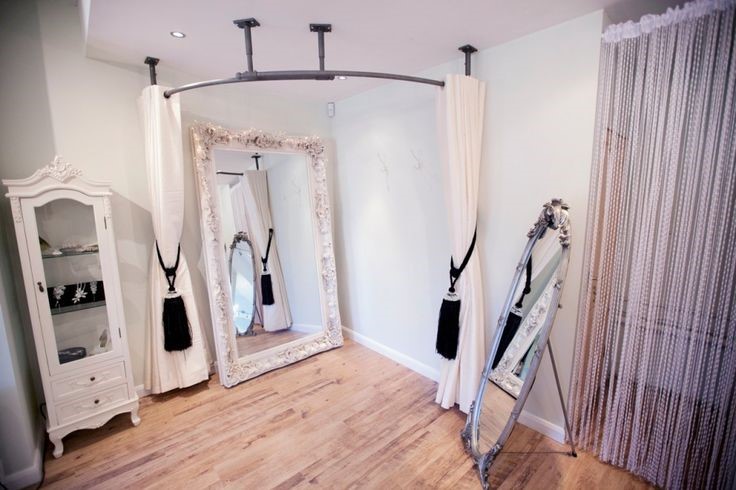
إضاءة الغرف المناسبة للبيع بالتجزئة
تقليديًا ، يتم إضاءة معظم الغرف المناسب عن طريق تركيبات الفلورسنت العلوية. ومع ذلك ، فإن دمج مصادر الإضاءة المنتشرة والاتجاهية مع CRI متفوقة يمكن أن يوفر المزيد من الإضاءة الاغراء. هذا النهج المزدوج الإضاءة يعزز ظهور كل من العملاء والبضائع. وضع المباراة الاستراتيجية أمر ضروري للقضاء على الظلال ، خاصة عند الانعكاس في المرايا. إنه العميل ، وليس المرآة ، الذي يجب أن يتم إلقاء الضوء عليه.
إن دمج تقنيات الإضاءة الموفرة للطاقة في غرف التركيب يمثل مزايا إضافية. هذه الأضواء تنبعث منها حرارة أقل ، مما يقلل من حمل التبريد وتعزيز راحة غرف الملابس ، مع خفض نفقات الطاقة الإجمالية في وقت واحد.
مخرج & إضاءة الطوارئ
يقدم Ledaplus مجموعة من حلول الخروج الممتازة وحلول الإضاءة في حالات الطوارئ المصممة لبيئتك. تلعب هذه المباريات دورًا مهمًا في توجيه الركاب بأمان أثناء حالات فشل الإضاءة العامة. في المواقف التي يكون فيها الإخلاء غير ضروري ، تضمن الإضاءة الأمان والراحة حتى يتم إعادة ظروف الإضاءة العادية.
تخضع مُعزّلات الخروج والطوارئ في ليدبلوس للاختبار الصارم لدعم أعلى معايير السلامة ، وتفوق المتطلبات التي تحددها معايير NFPA101 و NEC و UL294.
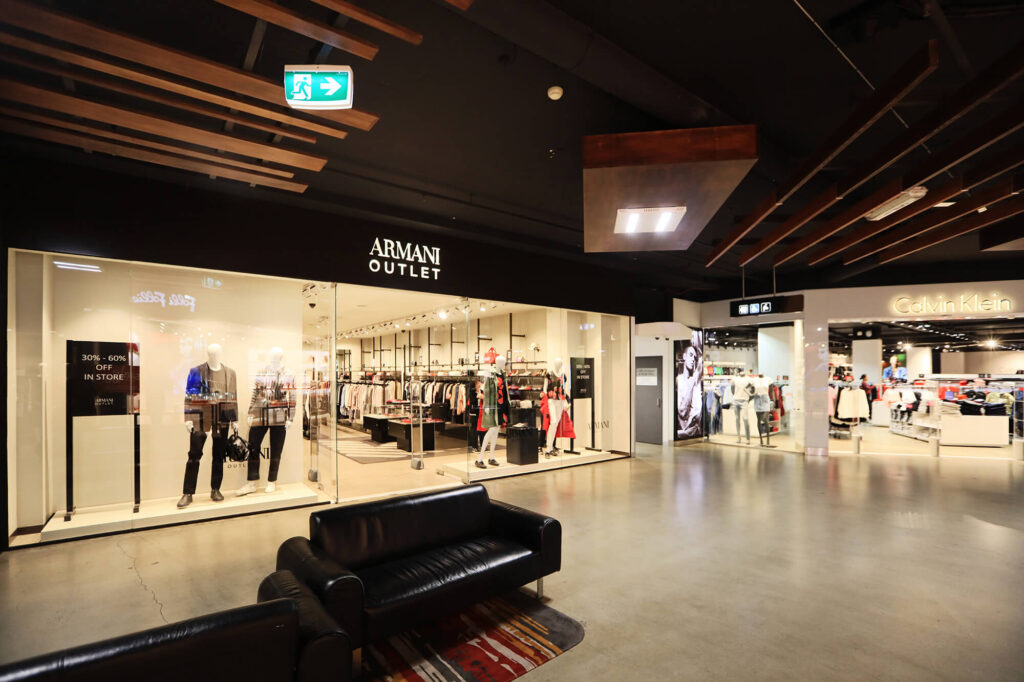
مخرج & متجر التجزئة لإضاءة الطوارئ
خاتمة
يعد تحقيق التوازن بين تأثيرات الإضاءة والقدرة على تحمل التكاليف والقدرة على التكيف أمرًا بالغ الأهمية في تصميم إضاءة البيع بالتجزئة. لا يعزز تصميم الإضاءة الذكي ظهور البضائع فحسب ، بل يساهم أيضًا بشكل كبير في تجربة التسوق الشاملة وأداء المبيعات. من خلال التركيز على الخصائص الرئيسية مثل كفاءة الطاقة والمرونة والصيانة ، يمكن لتجار التجزئة إنشاء خطة إضاءة تدعم أهداف أعمالهم وصورة العلامة التجارية.
التعليمات
من خلال اتباع هذه الإرشادات والنظر في الجوانب الرئيسية لتصميم إضاءة التجزئة ، يمكن لتجار التجزئة إنشاء بيئة تسوق جذابة وفعالة تعزز رضا العملاء ويدفع المبيعات.
